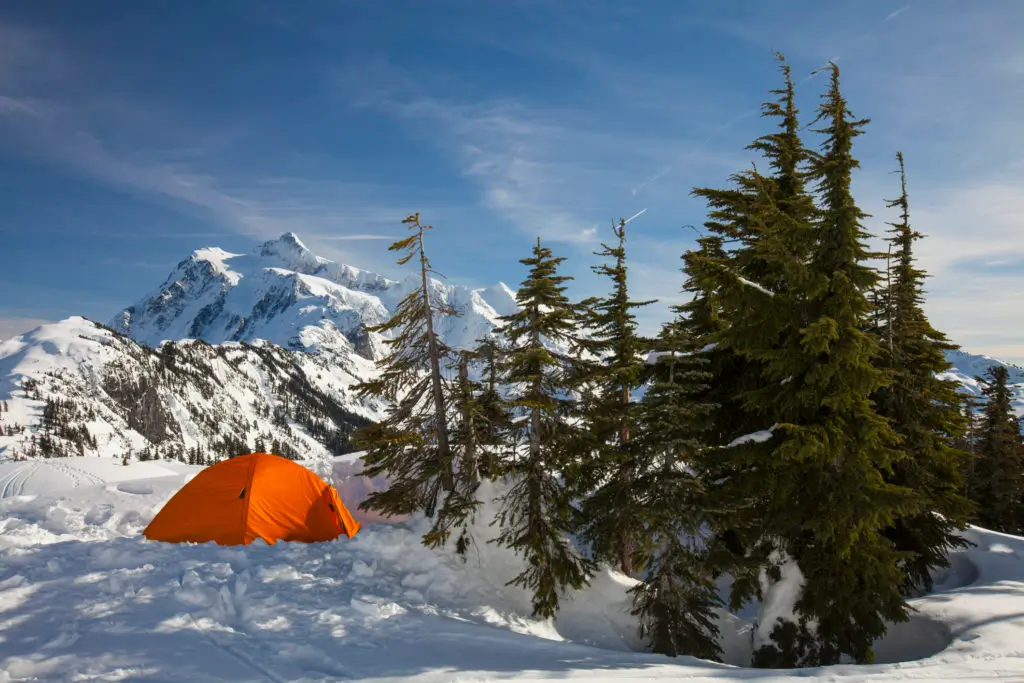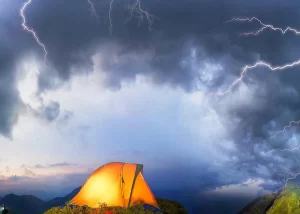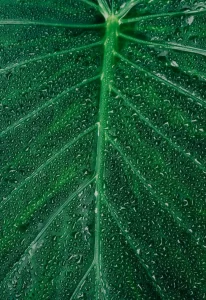Starks have finally turned to be right. Winter has come. So has snow and cold, which makes us think twice before going camping. Although everywhere is blanketed in white as long as eyes could see offering a postcard-like view that is too tempting to grab the backpack, that cold restrains us from stepping outside. Staying at home sounds more logical than seeking adventure. Naturally. What if we change your mind, putting some convincing arguments forward as to why it isn’t that much frightening activity to do and how fulfilling it might be for you? Still insist on staying indoors? While winter camping is at your service?

First of all, like you do, everyone thinks that going camping in winter would be a mistake. This is good because of the effect. Considerably more seclusion than other seasons. Besides, hibernation of bears and this challenging weather forcing reptiles to brumate ( a period of dormancy only in reptiles, the state of shutting down their bodies to conserve energy migrating to underground ) lessen the risk of dangerous confrontations too. No need to mention insects or flying creatures that are off to warmer regions or retreat under the soil, inside the wood of logs or anywhere else away from the ground in order to survive. So, we seem to be only visible occupiers of nature.
However, wolfs do not hibernate. Neither do cats. The reason we have to make a fire as soon as reaching our camping spot. A shining flower and its smoke will keep them away, causing surprising intruders to hesitate to leave their secure zone. What is unusual or extraordinary in nature doesn’t generally attract predators. They don’t have the courage of innocence like small curious animals have.
Fire in winter camping

Apart from security, fire also provides heat and cozy ambience that improves our mood thanks to the relief it radiates. Making a fire pit with stones you can find in the vicinity:
- Use dead, dry wood for fire otherwise wet wood you gather produces lots of smoke and it will be harder to keep fire going. Wetness of wood affects the time span it flames up,
- Be sure of the fire pit is approximately twenty feet away from the tent,
- Before it gets darker, you must have firewood that can be enough all night long. We want them to burn slightly till morning,
- On leaving, soak the ashes with some water or cover them with snow lest you leave a living thing behind.
Against Cold
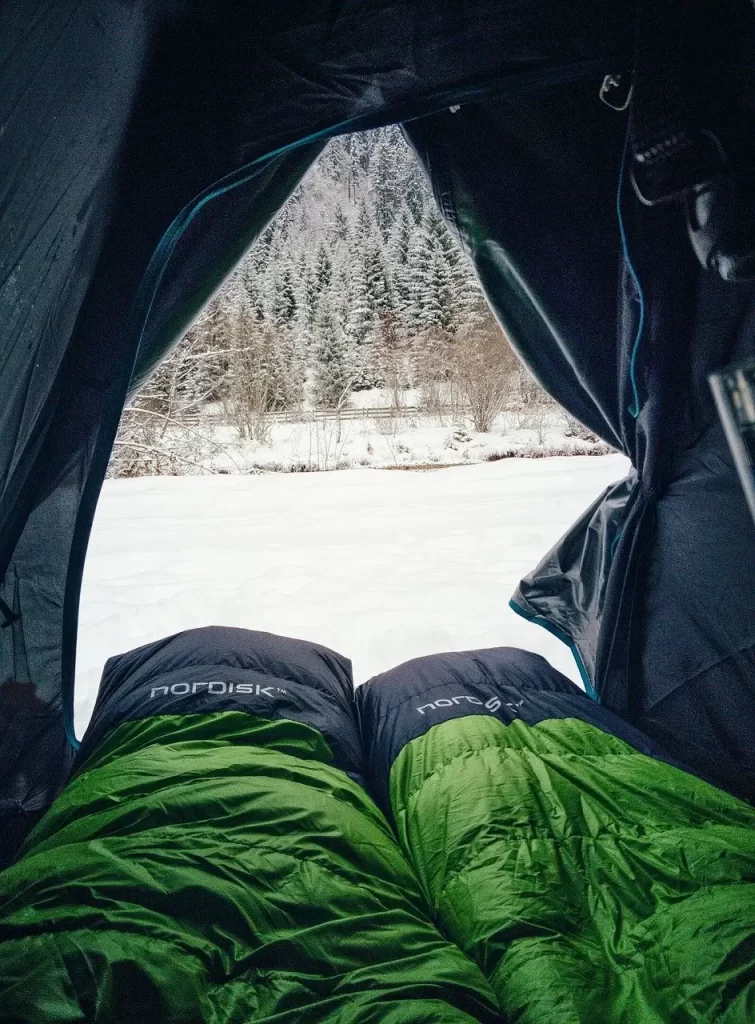
Setting a proper spot to raise a tent on snow is the first precaution against cold we should take.
- Not on vegetation or underneath trees, detect a flat spot to pack down the snow so that we have hard ground to sleep on,
- If it is too windy, you can build walls around your tent creating snow crates.
Second precaution is insulation and prevention of potential heat loss.
- Sleeping pad is the only layer between you and the ground that is the enemy of body heat of ours. Use two pads, one foam and one self-inflating pad with higher R-value ( a rating system from 1.0 to 8.0 used to grade insulation products or a material’s insulating properties ), to get best insulation,
- We need a decent sleeping bag to ensure warmth during cold night. They don’t actually provide warmth. Trapping a pocket of air, they just create a boundary between your body and the environment. This air pocket is warmed by your body heat and your body temperature doesn’t change. It will be good to do some mild exercise or stretching before getting inside of it. Lastly, its comfort and lower limit rating should be lower than the coldest temperature you expect to encounter during the night,
- Nutrition is the key for prevention of potential heat loss. Hot liquids ( even water shouldn’t be consumed without heating up ), calorie dense foods and constant consumption of these mean energy, energy causes movement, movement stabilizes body heat.
Third precaution is ventilation.
- Portable camping stoves with heaters application or other heaters run on electricity rather than propane are our inevitable options for the inside. But, it shouldn’t be forgotten that without ventilation moisture is formed, condensing on the inner surfaces of polyester walls of tent. Let air come through the air vents and circulation take place. It would be the worst thing in winter camping to have a dripping ceiling and wet floor.
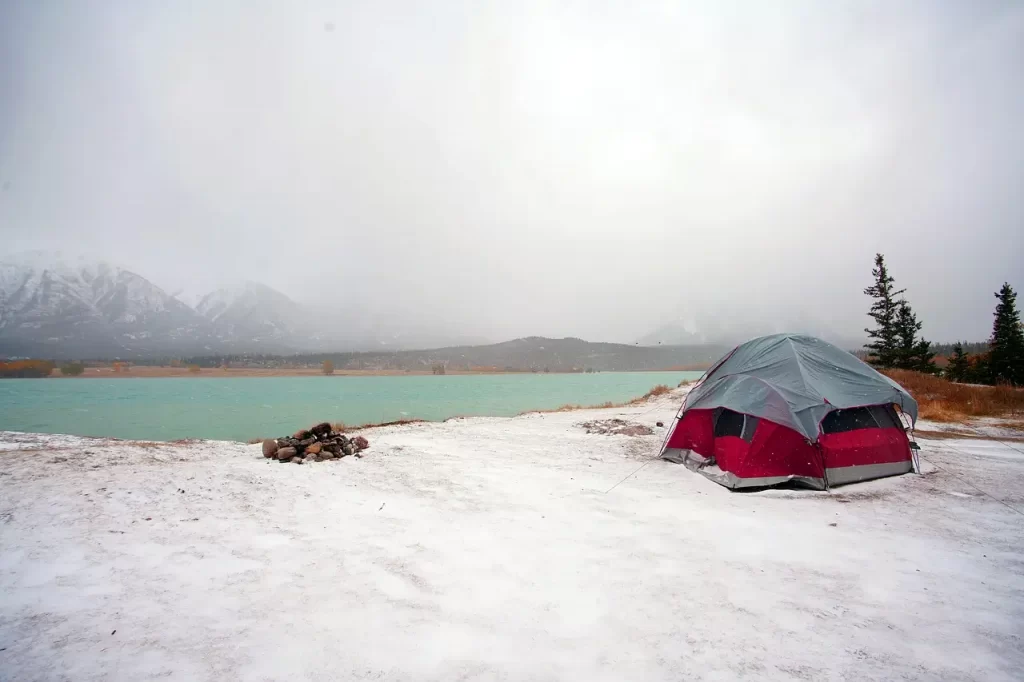
Additional
Dealing with snow is a bit attention demanding business. Be aware of your surrounding, especially of the spots that might be subject to avalanche. Moreover, if it snowing, shake the tent every hour. If you don’t, snow accumulates on it posing a danger for the dome and poles.
And, your backpack must be prepared in the light of ‘the Ten Essentials‘, including a folding shovel and a pair of snowshoes.
